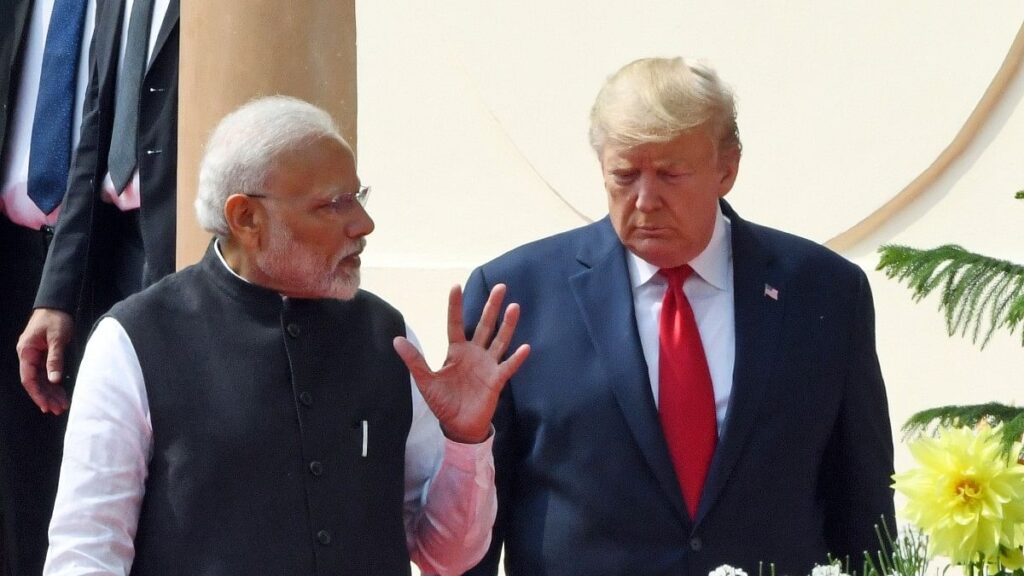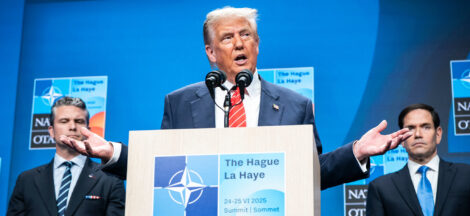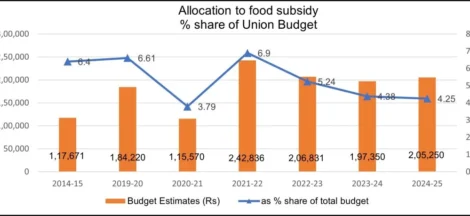By K Raveendran
U.S. Treasury Secretary Scott Bessent’s declaration that India could be the first to finalise a trade deal with the United States after President Trump embarked on his reckless trade war against the world signals a strategic point. The proposed agreement offers India an escape hatch from the looming 26 percent reciprocal tariffs that, though currently suspended until July, represent the shadow of Trump’s trade belligerence. In essence, the development may well be India’s best opportunity to engage in tough, calculated bargaining with the United States. This is not just about sidestepping punitive measures; it is about reshaping the economic partnership with Washington on terms that serve India’s long-term interests.
The opportunity arrives on the heels of one of the most tumultuous and incoherent phases in U.S. trade policy. Trump’s earlier administration became synonymous with an erratic, populist crusade against globalization and multilateral trade norms. Characterized by tariffs levied without warning and aimed at friend and foe alike, his trade war transformed the international marketplace into a geopolitical battleground. From Canada to China, Mexico to the European Union, few escaped unscathed from Trump’s indiscriminate use of tariffs as a blunt instrument of foreign policy. What started as an avowed effort to protect American workers and revive domestic manufacturing morphed into a protracted war of attrition that left scars on global supply chains and sowed widespread economic uncertainty.
China, bearing the brunt of this confrontation, retaliated in kind, triggering a tit-for-tat escalation that roiled markets and stunted growth. What emerged from this prolonged skirmish was not the “America First” utopia Trump had promised, but a fractured trading environment riddled with mistrust. Yet, perhaps the most dramatic twist in this tale came when Trump began to quietly roll back many of the very tariffs he had so proudly championed. The rollbacks on Chinese tariffs, for example, were emblematic of a deeper shift—an unspoken acknowledgment that his punitive economic strategies had backfired. Beijing, ever pragmatic, seized the moment to negotiate its own recalibration, further exposing the ad hoc and capricious nature of Trump’s approach to trade.
In this emerging context, India finds itself in an interesting position. Unlike many traditional U.S. allies, India has maintained a relatively balanced relationship with Washington, neither antagonizing Trump’s economic agenda nor aligning too closely with it. This neutrality, coupled with India’s growing economic clout and strategic importance in the Indo-Pacific, has positioned New Delhi as a valuable partner. With the suspension of reciprocal tariffs and the likelihood of a bilateral agreement, India has a rare chance to extract tangible concessions—perhaps even favourable terms on technology transfers, pharmaceuticals, defence procurement, or digital trade. The key, however, lies in the art of negotiation. India must not squander this moment with timidity. A bold, assertive approach is required, one that matches Trump’s bluster with hard-nosed realism.
Yet, caution is warranted. The very nature of Trump’s leadership complicates matters. His trademark unpredictability, a hallmark of his first term, appears to have endured into his second. As the President approaches the symbolic milestone of his first 100 days, there are worrying signs that his executive swagger remains unchecked. Whether driven by ego, ideology, or mere impulse, Trump continues to display a troubling disregard for consistency, institutional norms, and international commitments. The use of executive power in his latest term has been expansive, bordering on autocratic. Very much like Modi during his demonetisation days. The rollback of tariffs, for instance, did not follow any coherent policy review or legislative oversight but was instead issued via unilateral presidential directives. This mode of governance, while expedient, leaves trade partners vulnerable to sudden shifts, devoid of the stability that long-term economic planning requires.
This volatility casts a long shadow over any agreement India might negotiate. A deal signed today could be undone tomorrow, should Trump change his mind or perceive a domestic political benefit in renewed protectionism. The absence of institutional safeguards in Trump’s trade policy means that India must not only negotiate robust terms but also build in mechanisms that provide resilience against abrupt reversals. Dispute resolution frameworks, periodic review clauses, and mutual consultation mechanisms must be emphasized to ensure that any bilateral agreement is not merely a political showpiece but a durable foundation for economic cooperation.
Furthermore, India’s aspirations must extend beyond merely avoiding tariffs. The broader objective should be to reorient its trade strategy to leverage new geopolitical opportunities. As Western nations reassess their overdependence on China, and as global firms seek to diversify their supply chains, India can position itself as a credible alternative. The bilateral deal with the U.S. could be the linchpin of a larger narrative: India as the engine of stable, rules-based commerce in a world increasingly marked by caprice and confrontation.
To this end, India must also continue its outreach to other global powers. Diversification remains the most effective antidote to American unpredictability. Deepening economic ties with the European Union, strengthening strategic alignment with Japan and Australia, and enhancing South-South cooperation through multilateral forums such as BRICS and the SCO can all serve as counterweights to the risks inherent in Trump’s America. The goal must be a multi-vector foreign economic policy, not one that hinges excessively on the whims of a single, erratic leader. (IPA Service)




 High Court Summons Fadnavis and BJP MLAs Over Alleged Poll Irregularities
High Court Summons Fadnavis and BJP MLAs Over Alleged Poll Irregularities 